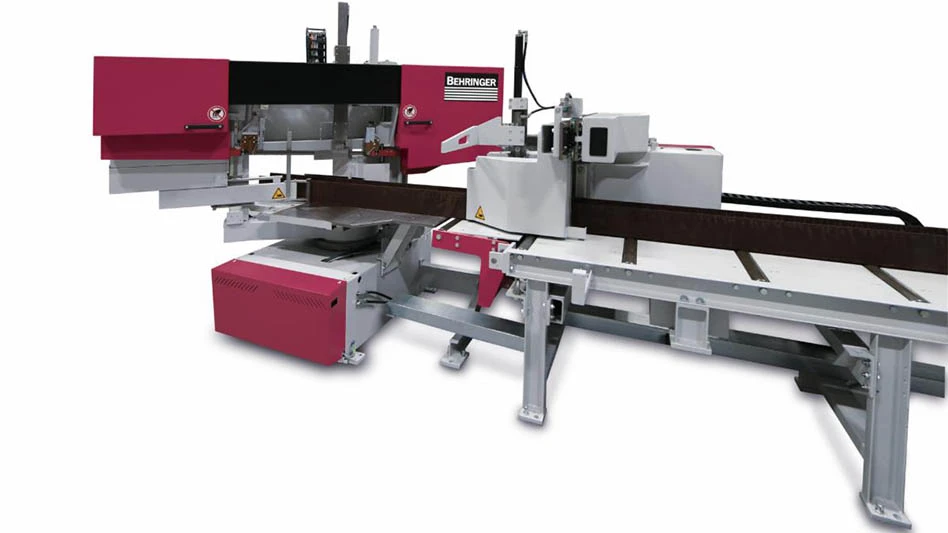
As a leading producer of high-performance materials and solutions for aerospace, defense and other industrial markets, ATI looks at every angle to keep their competitive edge. When ATI’s Forged Products business unit – which includes machining complex aerospace components such as rotating disks for jet engines – needed machine monitoring to improve productivity, they sought unique benefits beyond the norm.
ATI explored several machine monitoring solutions to track and optimize productivity across three locations in Wisconsin, Connecticut, and Poland. During a visit to Sandvik Coromant’s training center in Mebane, North Carolina, for a demo of the company’s Machining Insights machine-monitoring capabilities, they discovered an opportunity beyond just maintaining uptime.
“When we saw how Sandvik Coromant was using Machining Insights in their own facility, we had ideas on how we could use it for more than just monitoring our machines for operations,” says Dino Tomasetti, machining methods and technology engineer for ATI Forged Products. “We also saw it as a tool for engineering.”
After the demo, ATI transitioned from their existing monitoring solution, which provided limited data, to the comprehensive Machining Insights platform they could use across their locations.
Collecting downtime data

ATI Forged Products operates more than 100 CNC machines across the country, using Machining Insights from Sandvik Coromant in 20 of its advanced machining centers. The division works with high-performance materials, including titanium, nickel-based alloys, and other heat-resistant super alloys (HRSAs), to create complex parts for jet engines. The abrasiveness and stresses of these specialized materials create machining challenges that can lead to unwanted downtime or damaged parts. Tools wear down more quickly, so processes need to be very stable to avoid tool breakage that could damage a part. In this environment, tracking machine uptime and performance to avoid such failures is essential to keep ahead.
ATI first implemented basic machine monitoring software about 10 years ago to eliminate time-consuming, unreliable paper-based reporting on machining times. But the solution proved less than perfect as it involved a lot of manual processes and the data wasn’t especially helpful in determining downtime causes.

“We were automatically collecting uptime, but we weren’t really collecting our downtime, which is a very important piece of the puzzle,” Tomasetti says. “So, for about three hours a day, every single day, I would check each machine and collect non-running time, talking to operators to put together a picture of how the machines were performing.”
Another problem they faced, as many aerospace manufacturers do, was tool life. When you’re dealing with complicated parts and difficult materials such as HRSAs, tools and inserts can wear down quickly. Even though ATI employed a redundant tooling strategy to avoid downtime, they were still getting no-tool-available alarms.
“When that happens, the machine stops making chips,” Tomasetti says. “And when we’re not making chips, we’re not producing parts.”
Data-driven machining

ATI turned to metal cutting expert Sandvik Coromant for a more robust machine monitoring solution to eliminate manual data collection and improve tool utilization. The company’s Machining Insights software had several features that attracted ATI. Now they could remotely gather a broad range of data sets in real time so they could track loads on the motor, alarms, tool availability, and more – from anywhere.
Machining Insights also let them set custom rules to automate analysis for value-add machining. For example, if ATI runs its feedrate override at less than 80%, they can set a rule that counts it as downtime because it doesn’t meet their standard of productivity, even though the machine is technically cutting chips. That was important to ATI, Tomasetti says, because they wanted to eliminate all the ‘noise’ and get reliable data that wouldn’t require constant double-checking.
When they implemented Machining Insights, they started on a small scale: two machines to prove-out the software and establish benchmarks for value-add time and non-value-add time. Once their rule parameters delivered the data they were seeking, they expanded the solution to other machines, new and old, across all operations, including in Poland.
“Implementation was fairly easy,” Tomasetti says. “Sandvik came on-site, we connected it, and within a couple of hours were collecting data. Now we’re looking at the data as a daily tool rather than something we react to weekly or monthly. We’ve learned to use it proactively, which is how we make it a robust monitoring solution.”
Doing more

Since implementing Machining Insights, ATI has realized significant benefits, including unique advantages that go beyond the usual machine-monitoring solution. Now their feedrate overrides rarely drop below 100%, and they’ve seen a clear difference in their flow of inventory as they produce more parts faster. They’ve also improved tool availability by tracking tool data and reconfiguring magazines to optimize tool setups on each machine. That results in higher overall capacity and throughput across their entire operation.
But where Tomasetti, an engineer, finds the most unexpected value from the software is through proving out processes to machine new parts and stabilizing processes for existing parts. He can develop new machining methods for new parts remotely by tracking the paths and cutting forces in real time. The data is accurate enough to determine on the spot what needs to change to improve the process.
This has resulted in big improvements for new product setup. What used to take a week of on-location engineering time and nearly half a dozen test parts can now be accomplished in one or two days with just one or two parts. This has made their operation nimbler, Tomasetti says, and it frees up his time to handle other engineering tasks.
Forward-thinking partners

Part of what makes Machining Insights so successful for ATI is the level of partnership they have with Sandvik Coromant. From planning and implementation to support and research and development (R&D), Sandvik Coromant works closely with ATI to make sure they’re getting the most from their machine monitoring solution.
“They’ve been there every step of the way,” Tomasetti says. “They’re very responsive to our requests, and we still have frequent meetings with them just to make sure everything’s in working order. We’re also considering adding more data collection capabilities so we can get data right from the cutting tool.”
This would allow ATI to compare optimal cutting conditions and predict tool failures, especially with new aerospace materials where they don’t have cutting data yet. Tomasetti also envisions the Machining Insights data being useful for R&D.
ATI was already working closely with Sandvik Coromant’s engineering team on machining R&D projects and experimental tests at the Sandvik Coromant Center in Mebane. As a production shop, it’s challenging for ATI to conduct tests on-site, so having access to a capable test facility is beneficial. And with new data on cutting interfaces, pulled from Machining Insights, Tomasetti thinks they can streamline tests and arrive at optimal cutting solutions faster.
“I think it has a big possibility to take us toward Industry 4.0 solutions,” Tomasetti says. “Machine monitoring is how we take technology to the next level. I’ve seen it go from paper to basic monitoring, to what we’re doing now with Sandvik Coromant. Who knows what’s next?”

Explore the March 2024 Issue
Check out more from this issue and find your next story to read.
Latest from Aerospace Manufacturing and Design
- Gleason Corp. acquires the Intra Group of Companies
- Thread milling cutter reduces cutting pressure, vibration
- Malaysia Aviation Group orders 20 more Airbus A330neo widebodies
- More displacement from space-tested piezo actuators
- Textron Aviation to bring its largest-ever lineup to 2025 EAA AirVenture
- Qualified materials for 3D-printing mission-critical applications
- #69 Manufacturing Matters - Shopfloor Connectivity Roundtable with Renishaw and SMW Autoblok
- Demystifying Controlled Unclassified Information (CUI)





